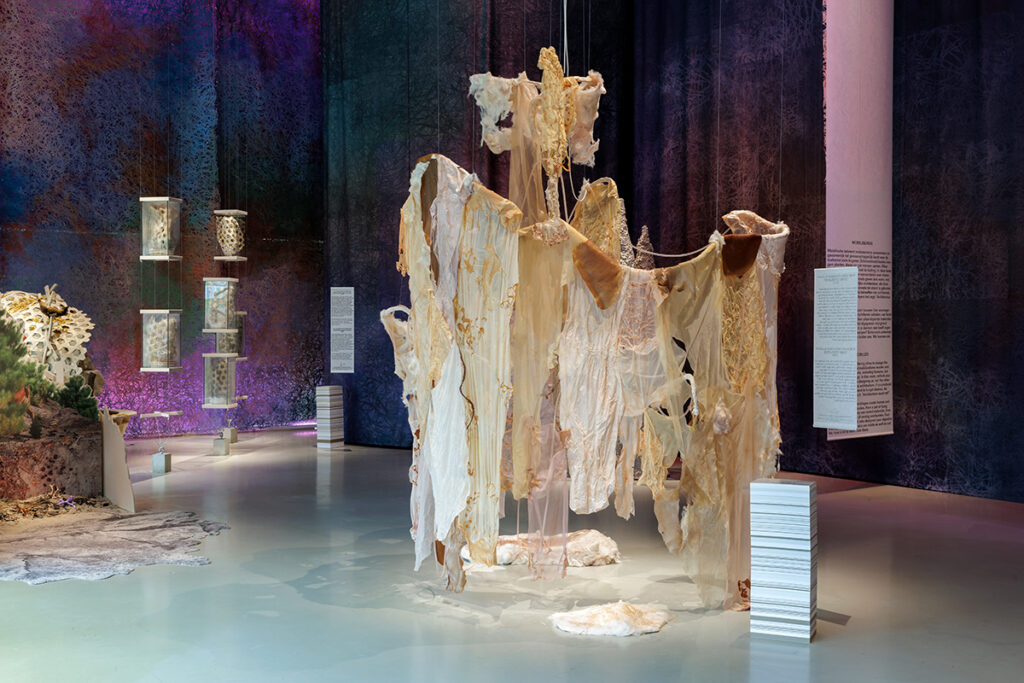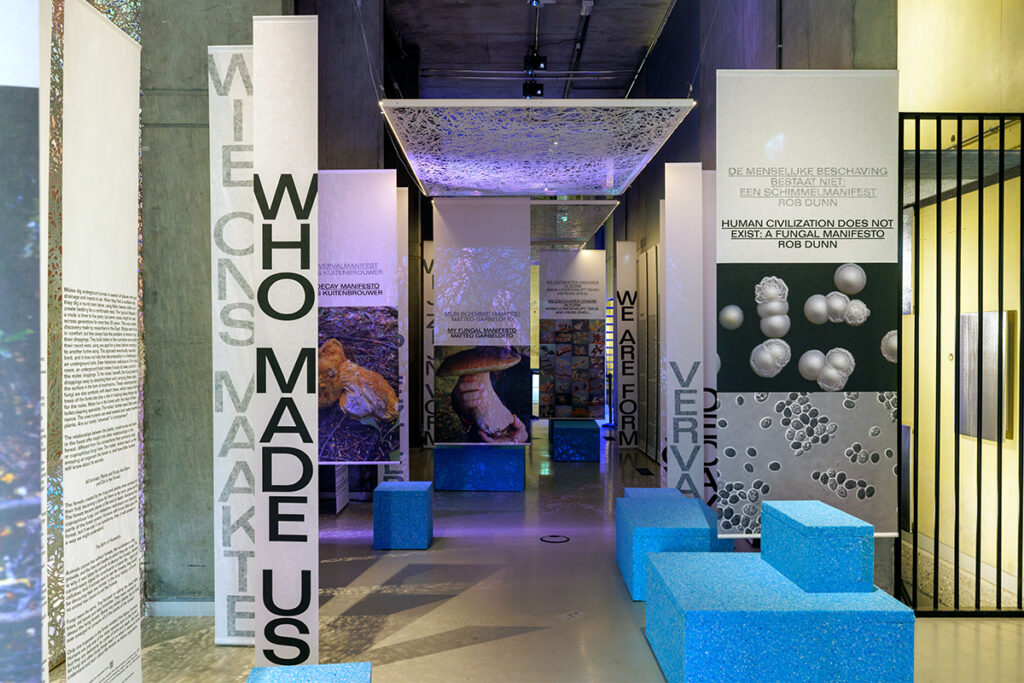FUNGI: Anarchist Designers opened Thursday 20 November at the Nieuwe Instituut, the Dutch national museum for architecture, design and digital culture, located in Rotterdam.
The exhibition was curated by the acclaimed anthropologist Anna Tsing, whose book The Mushroom at the End of the World has inspired countless thinkers, creators, activists and designers, and the designer Feifei Zhou (terriStories). Curators Zhou and Tsing take visitors outside their human-centric comfort zone and into a world in which fungi are not just a trendy new material, but anarchistic designers who disregard our needs and challenge our desire to control everything.

The exhibition
At the heart of FUNGI are seven new pieces of art created specifically for the exhibition. These are the result of collaborations between artists and scientists. The artists have reinterpreted existing scientific research and translated it into paintings, sculptures and multimedia installations. These works showcase fungi as independent designers, allies, and world builders. In addition, also on display are four commissioned individual works, and several loans by artists including Lizan Freijsen, Olafur Eliasson and Annicka Yi.
Visitors can experience the story of FUNGI across various sections and galleries. The first gallery, Break, demonstrates how fungi attack materials in places such as kitchens and hospitals, despite human attempts to prevent this. Such attacks also affect agricultural monocultures, as demonstrated in the installation about coffee rust called Contagious Extraction (Filipp Groubnov, Ivette Perfecto and Zach Hajian-Forooshani, 2025).





The second room, Assassinate, has a more ominous atmosphere, partly due to the ‘infection’ of a wriggling mycelium in the air (Hajime Imamura, Mushrooms are Messengers of Mortality, 2025). This room tells the story of how fungi can become a deadly force, partly due to industrial agriculture and globalisation. The sculpture Perforated Protection (Oscar Furbacken, Lee Berger, Jamie Voyles and Danielle Wallace, 2025), for example, is a memorial to the countless frog species that became extinct after the Bd fungus spread via global trade.



The third room, Mobilize, takes a more optimistic approach, demonstrating how fungi can coexist with human and non-human life, from termite mounds and elephant dung to the human digestive tract and architecture. This is evident in the installation Architecture must rot (Chair for Biohybrid Architecture, 2025), in which architect Phil Ayres allows fungi to take the lead in ecological design. It also demonstrates how fungi live on the trees in the adjacent New Garden to support its zoöp, the museum’s governance model that takes non-human life into account.




Concluding the exhibition, the final corridor features five manifestos that invite visitors to consider the implications of our current relationship with non-human life and its potential impact on the future, and which new ideas warrant further exploration.


Exhibition ‘FUNGI: Anarchist Designers’
Nieuwe Instituut, Rotterdam
21 November, 2025 – 9 August, 2026
nieuweinstituut.nl
Photography: Aad Hoogendoorn



